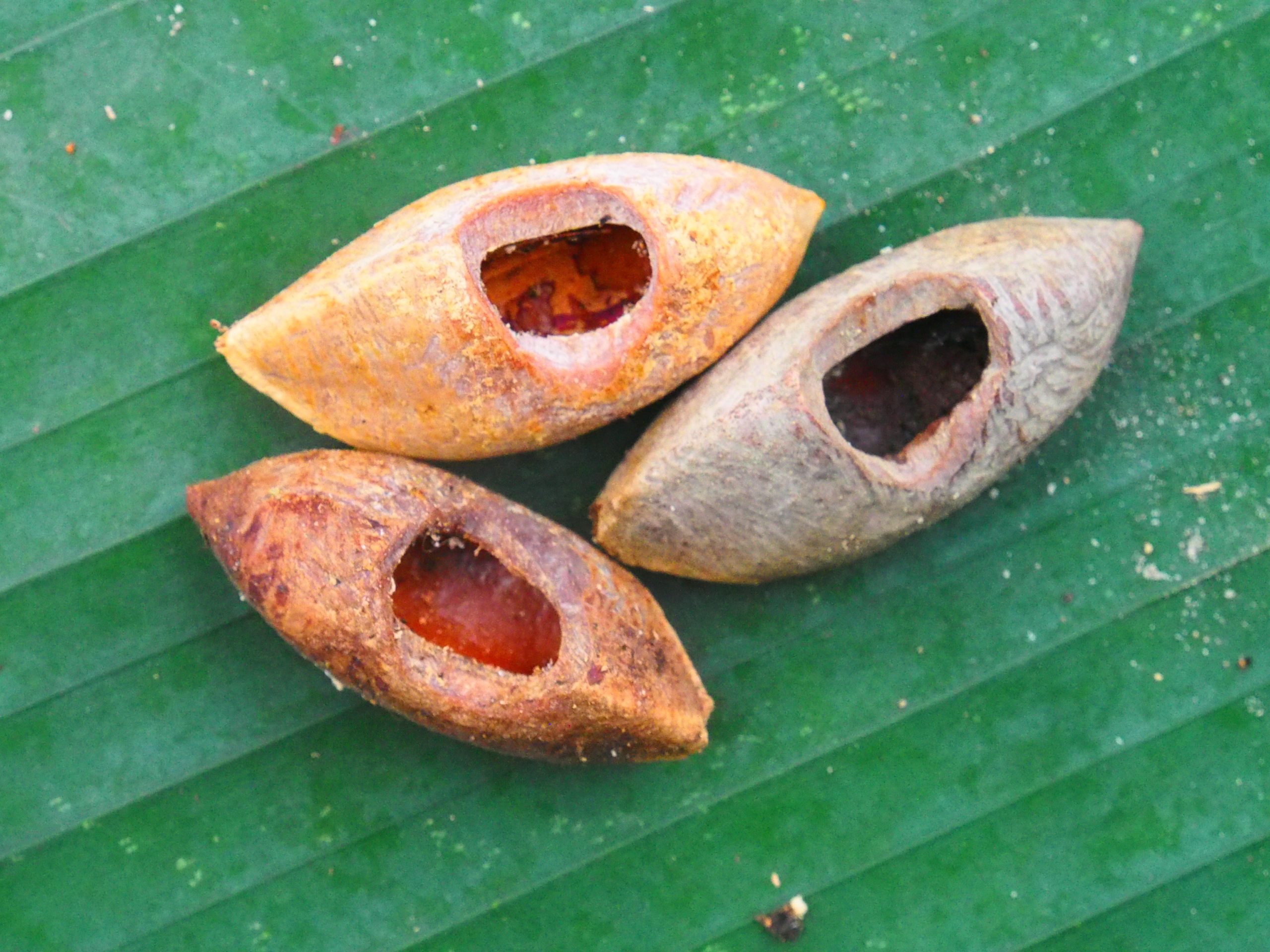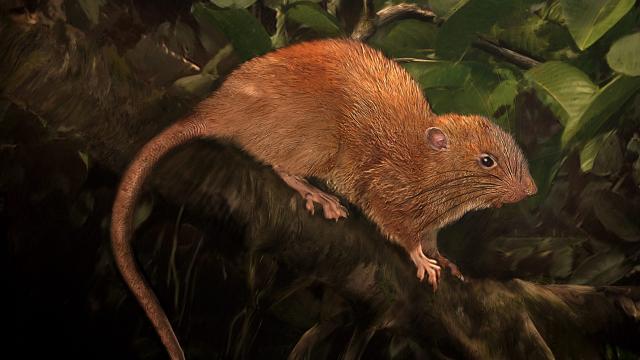The Solomon Islands — a nation comprised of nearly one thousand islands located northeast of Australia, between Vanuatu and Papua New Guinea — is an impressive corner of the globe. Dense, lush rainforest blankets the majority of the islands, and the country’s coral reef biodiversity is among the richest in the world. Many of the plants and animals in the Solomon Islands have evolved in splendid isolation, and now, one of these animals has emerged from its idyllic surroundings, revealing itself to science for the first time: the vika (Uromys vika), a big-arse rat four times the size of even the heftiest of the familiar, city-slicker variety.
This is an illustration of the new species, Uromys vika. Image: Velizar Simeonovski, The Field Museum
What, you were expecting a gorgeous tropical bird or something?
Described in a newly-published paper in the Journal of Mammalogy by researchers at Chicago’s Field Museum and the Solomon Islands’ Zaira Resource Management Area, the vika is a sight to behold. Including the scaly tail, the deep brown, robust rodent can be a foot and a half long, and can weigh as much as a pineapple. The vika, like its closest relatives, is an avid climber and likely spends most of its time high in the trees of the rainforest, clambering around in the middle of the night much like a possum.
This new species can be distinguished from other Uromys species — many of which are also found in the Solomon Islands — by measurable differences in skull shape and by its genes. So far, the vika is only known from the island it was discovered upon, Vangunu.
While Uromys vika is “new” in the formal, scholastic sense, the animal was already a part of the traditional knowledge of Vangunu’s residents. It was familiar to many people on the island as a beefy rat that liked to devour green coconuts, boring into them with its rugged incisors. Some of the earliest recorded accounts of the vika from locals include notes that it was supposedly common on some of the small, former plantation islands just offshore Vangunu. The vika’s introduction to the scientific community came after years of searching, after lead study author Tyrone Lavery heard descriptions of the rat from Vangunu locals back in 2010.
After much time and effort attempting to find the giant rat in Vangunu’s rainforest, a single specimen was eventually found scrambling out of a felled tree. The observation and collection of a physical specimen was the final piece of the puzzle.
Currently, there is much to learn about the vika and its lifestyle. For example, it hasn’t been confirmed via observations if the animal mows down on coconuts. However, on Vangunu, the nuts of the Canarium tree — galip nuts — have been found with round holes chewed into them and the interior meat removed. Given the specific type of teeth marks on these nut holes, it’s thought that the newly-discovered giant rats are the culprits. If vika can drill through the thick walls of the galip nut, it’s not farfetched to think that coconuts may indeed be on the menu as well.

These are nuts bearing the characteristic tooth-marks of Uromys vika. Image: courtesy of Tyrone Lavery, The Field Museum.
The vika is the first rodent discovered in the Solomon Islands in 80 years, and fits into a remarkable pantheon of Solomon Island mammals, half of which are found nowhere else on Earth. Some of these include the dwarf flying fox (the smallest fruit bat in the world) and the Guadalcanal monkey-faced bat. This hotbed of mammalian endemism is largely due to the islands’ position between landmasses: close enough for things to fly or float there occasionally, but far enough away to make leaving the islands difficult. The native land mammals of the Solomon Islands are almost exclusively bats and rats, both animals that are apparently quite good at reaching far-flung locations.
“Vika’s ancestors probably rafted to the island on vegetation, and once they got there, they evolved into this wonderfully new species, nothing like what they came from on the mainland,” explained Lavery in a statement.
Tragically, so soon after its scientific debut, Lavery and his colleagues expect the vika will be immediately designated “critically endangered,” since it is so rare and its tiny native range on Vangunu is threatened with logging.
